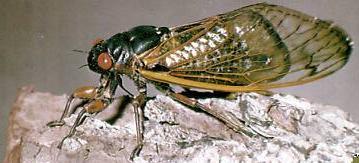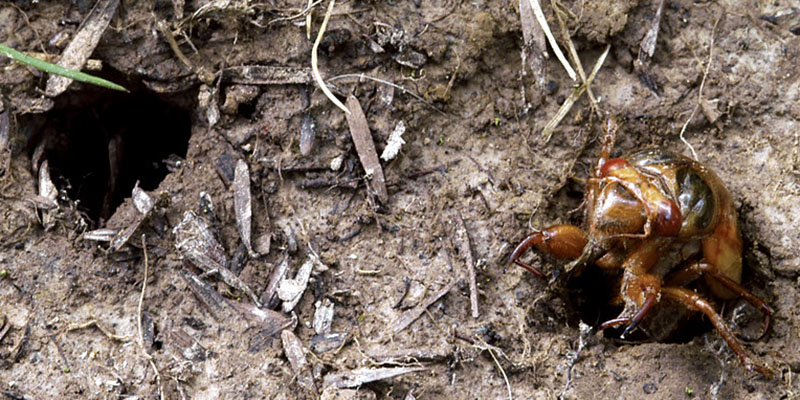
There are over 3,000 different species of cicadas around the world with about 190 of those species occurring in North America. Cicadas are on every continent except Antarctica.
Sometimes incorrectly referred to as locusts, cicadas are true bugs in the order Hemiptera. Locusts are the swarming phase of a short-horned grasshopper in the family Acrididae in the order Orthoptera.
Male cicadas create sound using a tymbal. Muscles contract very quickly to create sound. Sound is used to attract a mate or ward off predators. Sometimes male cicadas congregate into large groups and call together to attract females to the area
Cicadas sing primarily during the day. They may sing at night if they’re overcrowded, it is extremely hot, or if they’re disturbed or attacked, Lighting conditions such as a full moon or artificial lights may cause them to sing at night as well.
All species of cicadas spend most of their lives underground as nymphs only emerging for a short time as adults.

Types of Cicadas
There are two basic groups of cicadas. Annual cicadas have a lifecycle of 2-3 years and do not have synchronized life cycles. In Indiana, common species seen include Cicadettana calliope calliope (Southern Grass Cicada) and Diceroprocta vitripennis (Green Winged Cicada).
Periodical cicadas are in the genus Magicicada and have lifecycles that are synchronized to either 13 years or 17 years. While lifecycles are mostly synchronized, there may be individuals that emerge earlier than expected.
Cicadas in Indiana
Brood X (ten) is the largest of the 17-year broods and is expected in 2021 across all of Indiana. Other broods present in parts of Indiana include the 17-year broods XII, XIII, XIV and the 13-year broods XIX and XXIII.
Plant Damage
Females create tiny slits in small branches (up to about 1” in diameter) to lay eggs in. In a small, newly planted tree or shrub, this may cause noticeable damage. In a year where a large periodical brood is predicted to emerge, it may be best to delay plantings until the fall.

More information
- Cicadas of Michigan - The University Of Michigan
- Periodical Cicada of Indiana – Purdue Extension
- Cicada Mania
- Cicada Safari (A citizen science cicada mapping project from Mount St. Joseph University in Cincinnati)
- US Forest Service map of periodical cicada emergence
